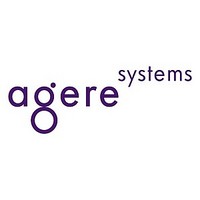T7256 Agere Systems, T7256 Datasheet - Page 38

T7256
Manufacturer Part Number
T7256
Description
(T7234 - T7256) Compliance
Manufacturer
Agere Systems
Datasheet
1.T7256.pdf
(60 pages)
Available stocks
Company
Part Number
Manufacturer
Quantity
Price
Company:
Part Number:
T72561ML
Manufacturer:
LUCENT
Quantity:
19
Company:
Part Number:
T7256A-ML
Manufacturer:
SAMSUNG
Quantity:
4 443
Part Number:
T7256ML2
Manufacturer:
LUCENT
Quantity:
20 000
Part Number:
T7256MLZ
Manufacturer:
LUCENT
Quantity:
20 000
T7234 Single-Chip NT1 (SCNT1) Euro-LITE Transceiver
Questions and Answers
U-Interface
A16: (continued)
34
If a transceiver can operate over Loop #1 error-
free, it should have adequate range to meet all
the other loops specified in T1.601. Loop #1 has
no bridged taps, so passing Loop #1 does not
guarantee that a transceiver will successfully
start up on every loop. Also, due to the complex
nature of 2B1Q transceiver start-up algorithms,
there may be shorter loops which could cause
start-up problems if the transceiver algorithm is
not robust. The T7234 has been tested on all of
the ANSI loops per the T1.601 standard and
passes them all successfully. Two loops com-
monly used in the lab to evaluate the perfor-
mance of the T7234 silicon are as follows:
The T7234 is able to start up and operate error-
free on both of these loops. Neither of these
loops is specified in the ANSI standard, but both
are useful for evaluation purposes. The first loop
is used because it is simple to construct and easy
to emulate using a lumped parameter cable
model, and it is very similar to ANSI Loop #1, but
the loss is slightly worse. Thus, if a transceiver
can start up on this loop and operate error-free,
its range will be adequate to meet the longest
ANSI loop. The second loop is used because,
due to its difficult bridge tap structure and its
length, it stresses the transceiver start-up algo-
rithms more than any of the ANSI-defined loops.
Therefore, if a transceiver can start up on this
loop, it should be able to meet any of the ANSI-
defined loops which have bridge taps. Also, on a
straight 26 awg loop, the T7234 can successfully
start up at lengths up to 21 kft. This fact, com-
bined with reliable start-up on the 15 kft 2BT loop
above, illustrates that the T7234 provides ample
start-up sensitivity, loop range, and robustness
on all ANSI loops. Another parameter of interest
is pulse height loss (PHL). PHL can be defined as
the loss in dB of the peak of a 2B1Q pulse rela-
tive to a 0-length loop. For an 18 kft 26 awg loop,
Configuration
18 kft/26 awg
15 kft/26 awg
Loop
(continued)
Bridge Taps
3 kft/22 awg
Two at near
end, each
None
(BT)
(continued)
@ 20
Loss
(dB)
38.7
37.1
kHz
Loss
@ 40
(dB)
49.5
46.5
kHz
Q17: What does the energy spectrum of a 2B1Q signal
A17: Figure A1 (curve P1) in the ANSI T1.601 stan-
Q18: Please clarify the meaning of ANSI Standard
A18: The intent of this requirement is to ensure that
the PHL is about 36 dB, which is 2 dB worse than
on ANSI Loop #1. A signal-to-noise ratio (SNR)
measurement can be performed on the received
signal after all the signal processing is complete
(i.e., at the input to the slicer in the decision feed-
back equalizer). This is a measure of the ratio of
the recovered 2B1Q pulse height vs. the noise
remaining on the signal. The SNR must be
greater than 22 dB in order to operate with a bit
error rate of <1e–7. With no impairments, the
T7234 SNR is typically 32 dB on the18 kft/26 awg
loop. When all ANSI-specified impairments are
added, the SNR is about 22.7 dB, still leaving
adequate margin to guarantee error-free opera-
tion over all ANSI loops.
Finally, to estimate range over straight 24 awg
cable, the 18 kft loop loss can be used as a limit
(since the T7234 can operate successfully with
that amount of loss) and the following calcula-
tions can be made:
Thus, the operating range over 24 awg cable is
expected to be about 24 kft.
look like?
dard illustrates what this spectrum looks like.
T1.601, Section 7.4.2, Jitter Requirement #3.
after a deactivation and subsequent activation
attempt (warm start), the phase of the receive
and transmit signals at the NT will be within the
specified limits relative to what they were prior to
deactivation. This is needed so that the LT, upon
a warm-start attempt, can make an accurate
assumption about the phase of the incoming NT
signal with respect to its transmit signal. Note that
the T7234 meets this requirement by design
because the NT phase offset from transmit to
receive is always fixed.
Loss of 18 kft/26 awg loop @ 20 kHz
Loss per kft of 24 awg cable @ 20 kHz
--------------------------- -
1.6 dB
38.7 dB
/
kft
=
24 kft
Lucent Technologies Inc.
February 1998
38.7 dB
1.6 dB












